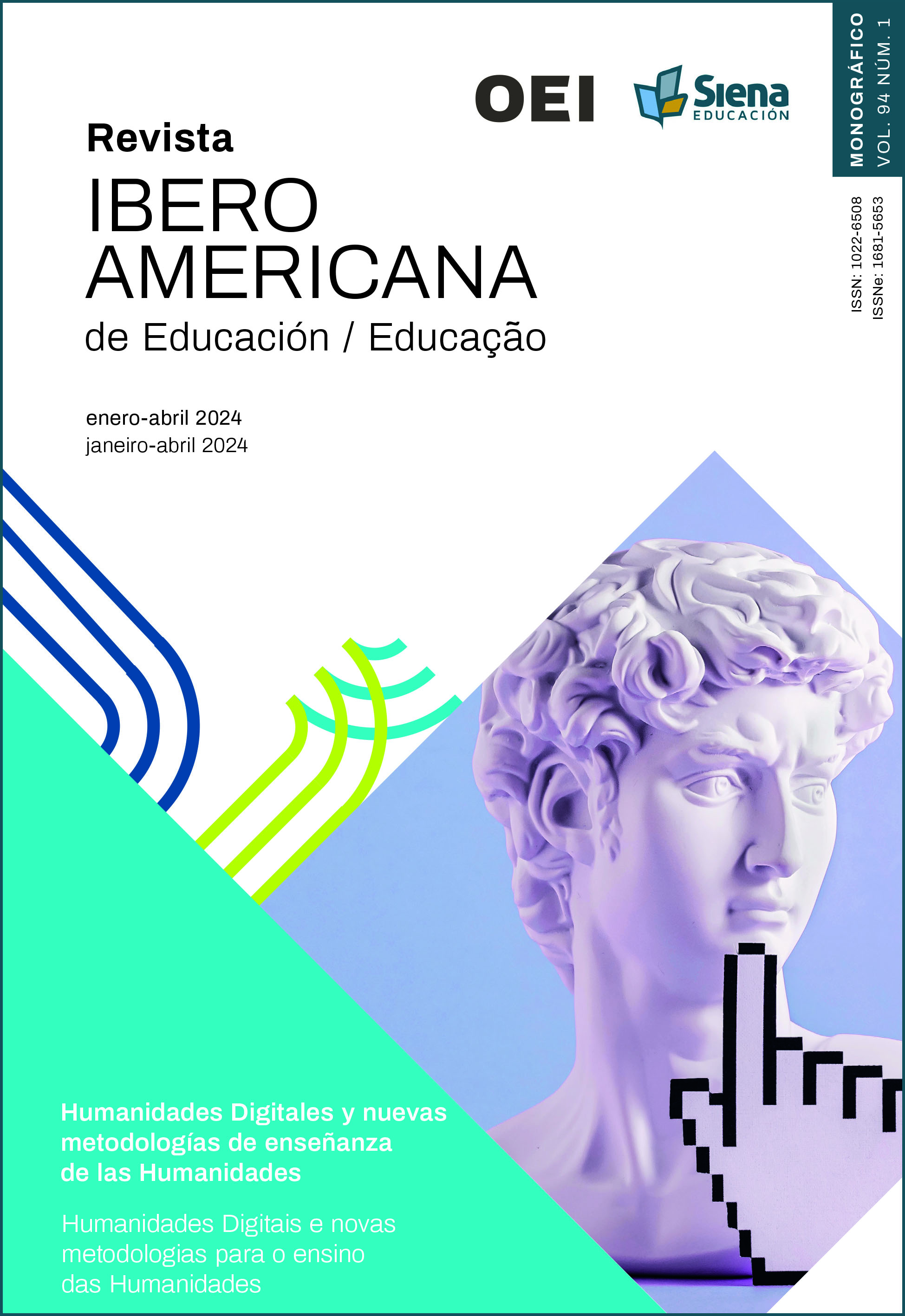Evaluation of school literary productions through single word count and digital lexical density
DOI:
https://doi.org/10.35362/rie9416091Keywords:
exical density; lexical analysis; literary competence; digital toolesAbstract
This research focuses on analyzing the inclusion of lexical density for the evaluation of literary products during the process of teaching literature with the digital tool Voyant-Tools. This research seeks to explore an alternative to improve literary skills in students who study the subject of Literature at the Colegio de Bachilleres de Tabasco in Mexico. During the course, students make literary productions in 3 didactic sessions, where they generate a corpus of text. The resulting corpora were studied through digital text analysis to obtain indicators that would characterize the students' literary competence in terms of lexical density and the number of unique words, better known as types. The results shown in this research indicate that, in the case of the selected sample, the numbers of unique words known as types are a better indicator of both lexical appropriation and literary competence in students compared to lexical density.
Downloads
References
Alhudithi, E. (2021). Review of Voyant Tools: See through your text. Language Learning & Technology, 25(3), 43–50. https://bit.ly/3SbfiC1
Alonso, F. (2017). Didáctica de la escritura creativa. Tarbiya, Revista De Investigación E Innovación Educativa, 28. https://revistas.uam.es/tarbiya/article/view/7321
Coll, C. (1988). Significado y sentido en el aprendizaje escolar. Reflexiones en torno al concepto de aprendizaje significativo. Infancia y aprendizaje, 11(41), 131-142.
Dabrowska, M. (2022). Análisis semántico y cuantitativo de La casa de Bernarda Alba en el aula con Voyant Tools. Una aproximación didáctica al análisis literario. Revista Internacional de Pedagogía e Innovación Educativa, 2(2), 57-74.
Del Río, R. M. G. (2022). Humanidades Digitales o las Humanidades en la intersección de lo digital, lo público, lo mínimo y lo abierto. Publicaciones de la Asociación Argentina de Humanidades Digitales, 3, e038. https://doi.org/10.24215/27187470e038
Godínez, E. M. y Alarcón, J. (2020). El léxico en la evaluación y en la didáctica de la escritura de textos de literatura. Lenguaje y Textos, 51, 69. https://doi.org/10.4995/lyt.2020.11373
Goldsmidt, J. Y. (2021). Voyant Tools en el análisis de letras de canciones: El tango y el rock en Argentina. Publicaciones de la Asociación Argentina de Humanidades Digitales, 2, e029. https://doi.org/10.24215/27187470e029
INEE, I. N. para la E. de la E. (2017). Plan Nacional para la Evaluación de los Aprendizaje. Resultados nacionales 2017. Educación Media Superior: Lenguaje y Comunicación, Matemáticas. Textos de Divulgación, INEE. https://bit.ly/3yXNTL1
López, B. G. y Rodríguez, L. M. (2002). La lectura y la escritura en la práctica docente: Un estudio de caso con maestros de Literatura y de historia en el nivel medio superior. Lectura y Vida, 23(4), 6-14.
López, M. H. (1984). La enseñanza de la lengua materna. Playor. https://bit.ly/3S663Dn
Maamuujav, U. (2021). Examining lexical features and academic vocabulary use in adolescent L2 students’ text-based analytical essays. Assessing Writing, 49, 100540. https://doi.org/10.1016/j.asw.2021.100540
Martos, N. E. (1986). Métodos y Diseños de investigación didáctica de la literatura. Ministerio de Educación y Ciencia. https://bit.ly/47LAQLl
MEJOREDU, C. N. para la M. C. de la E. (2020). Repensar la evaluación para la mejora educativa. Resultados de México en PISA 2018. Comisión Nacional para la Mejora Continua de la Educación. https://bit.ly/3vJO91z
Molina, M. (2017). Desarrollo y evaluación de la competencia lecto-literaria en el Bachillerato. [Doctoral, Alicante]. https://bit.ly/3vNaJGI
Obegi, G. N. (2005). La riqueza léxica como parámetro de distinción en los textos del inglés antiguo. Interlingüística, 16(2), 837–846.
Pérez-García, C. (2022). Humanidades digitales y educación literaria: Oportunidades y retos. Tonos Digital, 42. http://tonosdigital.es/ojs/index.php/tonos/article/view/2954
Ramírez, M. A. (2022). La Educación Media Superior ante la nueva Escuela Mexicana. Colegio de Bachilleres del Estado de Veracruz.
Rico-Gómez, M. L., & Ponce, A. I. (2022). Perspectivas según el rol formativo y profesional. RMIE, 27(92), 77–101.
Sari, A. N., & Ekawati, R. (2021). Lexical density in reader’s digest magazine. 15.
SEP (2022). Marco Curricular de la Educación Media Superior. (MCCEMS). Secretaría de Educación Pública. https://go.oei.int/m2zpsdzb
Torrijos, E. L. (2022). La edición literaria en Bachillerato: Voces marginadas del siglo XIX. Una propuesta didáctica para 1.o de Bachillerato.
Torruella, y J. Capsada, R (2017). Métodos para medir la riqueza léxica de los textos. Revisión y propuesta. VERBA, (44). http://dx.doi.org/10.15304/verba.44.3155
Wang, N. (2022). The rise of a new paradigm of literary studies: The challenge of digital humanities.
How to Cite
Published
Issue
Section
License
Copyright (c) 2024 Iberoamerican Journal of Education

This work is licensed under a Creative Commons Attribution 4.0 International License.
Any authors who publish with this journal accept the following terms:















